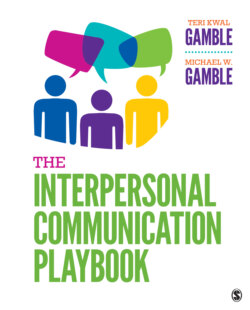Читать книгу The Interpersonal Communication Playbook - Teri Kwal Gamble - Страница 24
На сайте Литреса книга снята с продажи.
Noise
ОглавлениеIn communication studies, noise includes anything that interferes with or impedes our ability to send or receive a message. Noise distracts communicators by focusing their attention on something extraneous to the communication act. As the level of noise increases, it becomes increasingly unlikely that we will be successful at negotiating or sharing meaning. Effective communicators find ways to ensure their messages get through accurately despite any noise.
Noise emanates from both internal and external sources. Among the external sources of noise are the sight, sound, smell, and feel of the environment. A drab room, an overly warm space, a loud siren, an offensive odor, and too many conversations occurring at the same time are all examples of environmental noise.
Among the internal sources of noise are personal thoughts and feelings. Racism, sexism, ageism, feelings of inadequacy, hunger, excessive shyness or extroversion, and deficient or excessive knowledge can all interfere with the ability to send and receive messages effectively. Most of us find it easier to cope with external noise than with internal noise because closing a window, for example, is usually a lot easier than opening a mind or changing a personality. Have you created or been influenced by noise in any of your relationships today? Which kind(s) of noise typically causes you the greatest problems? (See Table 1.2.)
Table 1.2
